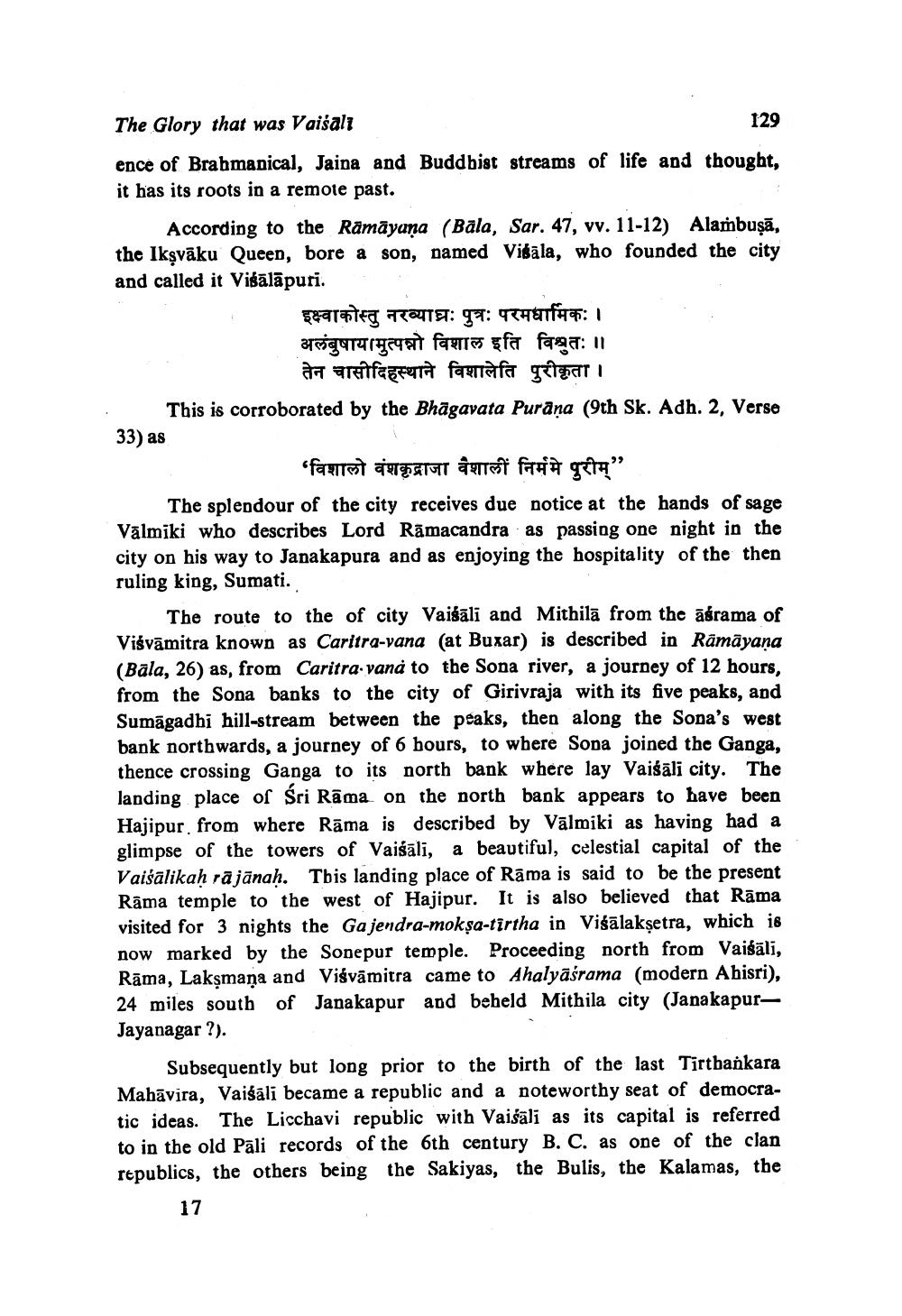________________ The Glory that was Vaisali 129 ence of Brahmanical, Jaina and Buddbist streams of life and thought, it has its roots in a remote past. According to the Ramayana (Bala, Sar. 47, vv. 11-12) Alambusa, the Iksvaku Queen, bore a son, named Vissala, who founded the city and called it Visalapuri. इक्ष्वाकोस्तु नरव्याघ्रः पुत्रः परमधार्मिकः / अलंबुषायामुत्पन्नो विशाल इति विश्रुतः // तेन चासीदिहस्थाने विशालेति पुरीकृता / This is corroborated by the Bhagavata Purana (9th Sk. Adh. 2, Verse 33) as 'विशालो वंशकृद्राजा वैशाली निर्ममे पुरीम्" The splendour of the city receives due notice at the hands of sage Valmiki who describes Lord Ramacandra as passing one night in the city on his way to Janakapura and as enjoying the hospitality of the then ruling king, Sumati. The route to the of city Vaisali and Mithila from the asrama of Visvamitra known as Caritra-vana (at Buxar) is described in Ramayana (Bala, 26) as, from Caritra.vana to the Sona river, a journey of 12 hours, from the Sona banks to the city of Girivraja with its five peaks, and Sumagadhi hill-stream between the peaks, then along the Sona's west bank northwards, a journey of 6 hours, to where Sona joined the Ganga, thence crossing Ganga to its north bank where lay Vaisali city. The landing place of Sri Rama on the north bank appears to have been Hajipur from where Rama is described by Valmiki as having had a glimpse of the towers of Vaisali, a beautiful, celestial capital of the Vaisalikah ra janah. This landing place of Rama is said to be the present Rama temple to the west of Hajipur. It is also believed that Rama visited for 3 nights the Gajendra-moksa-tirtha in Visalaksetra, which is now marked by the Sonepur temple. Proceeding north from Vaisali, Rama, Laksmana and Visvamitra came to Ahalyasrama (modern Abisri), 24 miles south of Janakapur and beheld Mithila city (JanakapurJayanagar ?). Subsequently but long prior to the birth of the last Tirtbankara Mahavira, Vaisali became a republic and a noteworthy seat of democratic ideas. The Licchavi republic with Vaisali as its capital is referred to in the old Pali records of the 6th century B. C. as one of the clan republics, the others being the Sakiyas, the Bulis, the Kalamas, the 17




